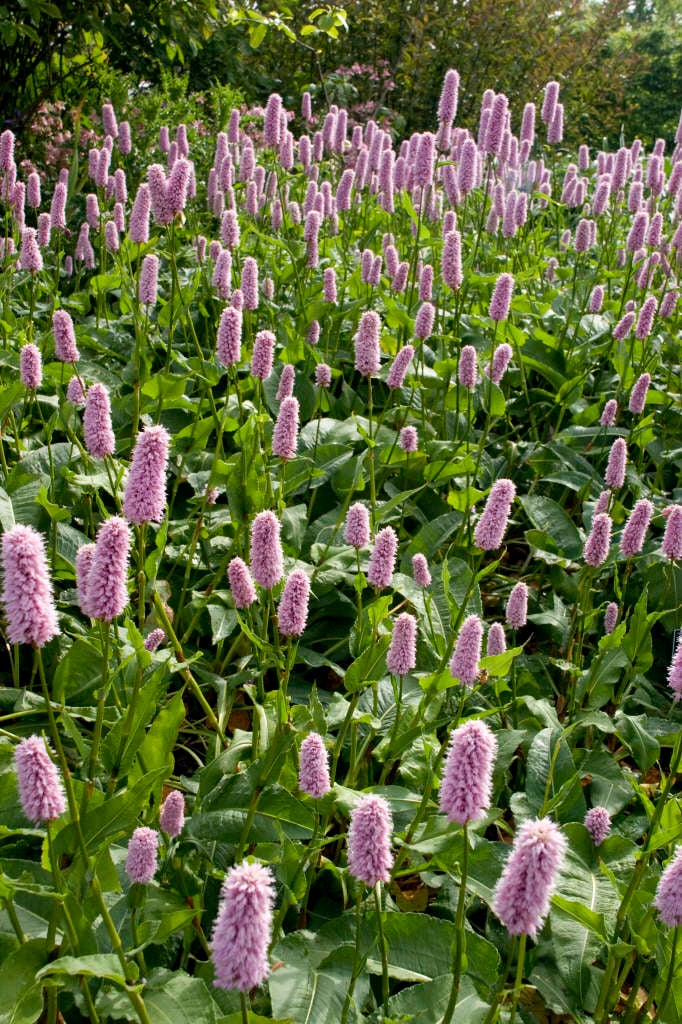Bistorta officinalis 'Superba'
red bistort 'Superba'
A vigorous, clump-forming herbaceous or semi-evergreen perennial to 95cm, with strongly veined, finely pointed ovate leaves. Dense spikes of small, fat, long-flowering soft grey-pink flowers appear in summer through to autumn. Tends to spread more easily in sunny locations, less so in dry shade. Good for waterside, smaller gardens and at the front of a flower border
Size
Ultimate height
0.5–1 metresTime to ultimate height
2–5 yearsUltimate spread
0.5–1 metresGrowing conditions
Moisture
Moist but well–drained, Poorly–drainedpH
Acid, Alkaline, NeutralColour & scent
| Stem | Flower | Foliage | Fruit | |
| Spring | Green | |||
|---|---|---|---|---|
| Summer | Pink Grey Silver | Green | ||
| Autumn | Pink Grey Silver | Green | ||
| Winter | Green |
Position
- Full sun
- Partial shade
Aspect
West–facing or East–facing or South–facing
Exposure
Exposed or Sheltered Hardiness
H7Botanical details
- Family
- Polygonaceae
- Native to GB / Ireland
- No
- Foliage
- Semi evergreen
- Habit
- Clump forming
- Genus
A genus of herbaceous, rhizomatous perennials with erect, unbranched stems, bearing short terminal spikes of small, white or pink, bell-shaped flowers
- Name status
Accepted
How to grow
Cultivation
Ideal for a moist soil although it can tolerate some dryness (with more of a wandering habit in dry shade). Suitable for full sun or partial shade
Propagation
Propagate by division in spring or autumn
Suggested planting locations and garden types
- Coastal
- Cottage and informal garden
- Wildflower meadow
- Banks and slopes
- Flower borders and beds
Pruning
No pruning required. Deadhead faded spikes
Pests
Generally pest-free
Diseases
Generally disease-free
Get involved
The Royal Horticultural Society is the UK’s leading gardening charity. We aim to enrich everyone’s life through plants, and make the UK a greener and more beautiful place.
